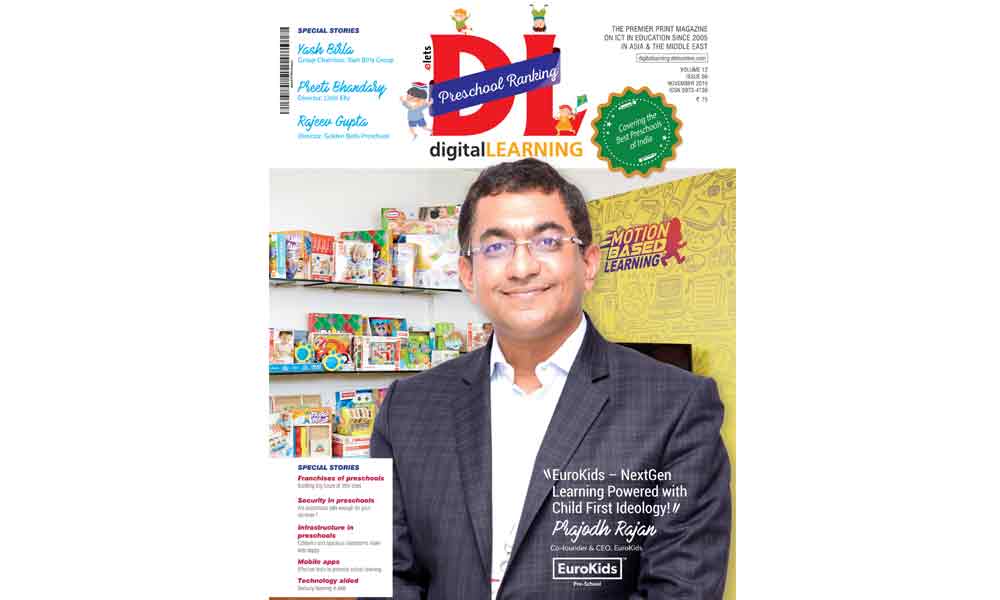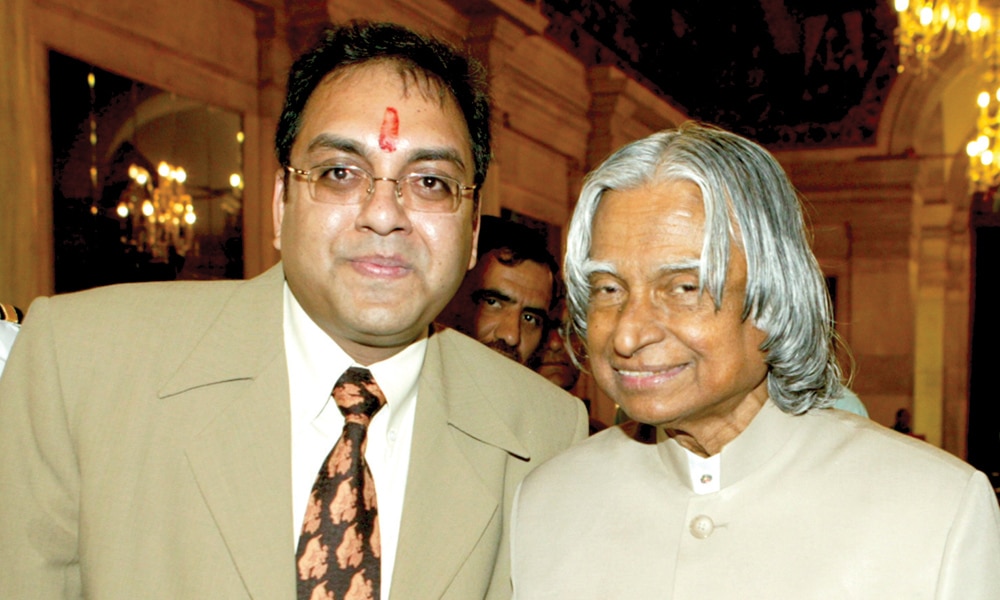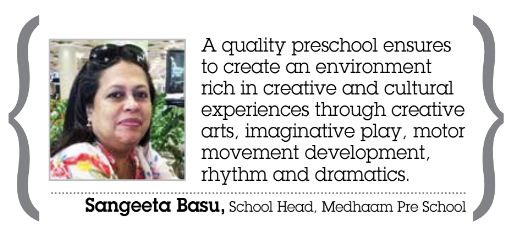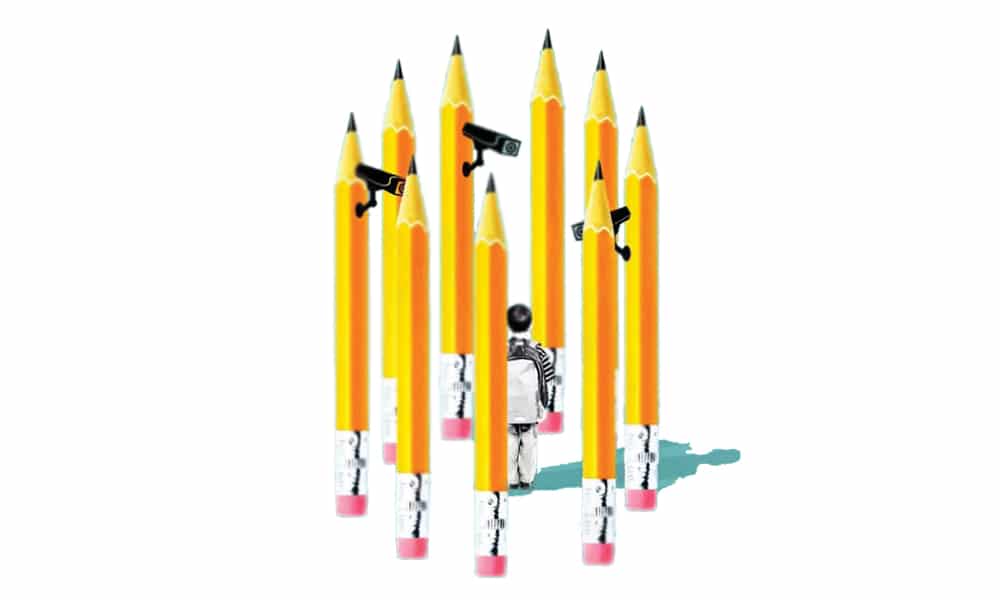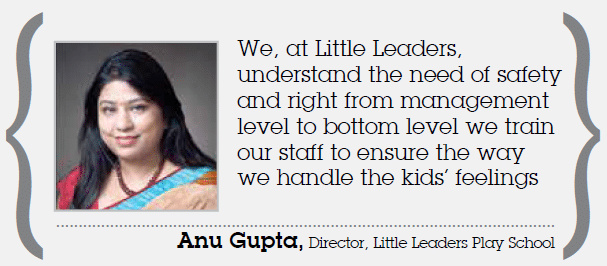As childhood is the first stage when child gets prepared for society, the early years of children play the key role in their lateral development. In those years, it is now important that toddlers also grow up as creative individuals while being introduced to their culture. Preschools can play an important role in this aspect, especially while ensuring children’s holistic development. Nowadays, there are many good preschools in India, with many more coming up almost every other day.
A competition between the big names in preschool industry caters to the good quality basic education and holistic development of children. Every school follows certain standards not only in teaching but also in terms of security, infrastructure and transportation of tiny-tots.
“Parents must look for a preschool that encourages development in sense of initiative and self-help, social and emotional development, cognitive development, physical development and hygiene, language-literacy and communication, creative arts, as a part of the educational belief and curriculum,” said Raj Singhal, CEO, Footprints preschool.
Preschool – History at a Glance
Growing urbanisation and increase in maternal employment outside the home has increased the demand of Early Childhood Care and Education (ECCE). The changing social scenario, over the years, laid down the foundation for introduction of Preschool Education/Early Childhood Care and Education (ECCE) in the country.
The earliest footprints of preschool or early childhood education, as an organised education initiative in India dates back to the latter half of the 20th century. The very first preschool education centers were established around 1946 in Gujarat and since then it was practiced to ‘Indianise’ the method to make preschool education available to majority of children in India.
After independence, different voluntary agencies and private institutions were trying to fulfil the need for preschool in the country. The government-taken first initiative in this area was in 1953, which was by setting up of a Central Social Welfare Board to start a grant–in–aid scheme for voluntary agencies/ private institutions.
Recognising the importance of ECCE, the Indian government launched Integrated Child Development Scheme (ICDS) in 1975 to improve health and education outcomes for children. The scheme provides early childhood education with the backing of Ministry of Women and Child Development, Government of India. To improve the health of children, ‘Anganwadis’ were also established under the scheme across the country. ICDS is one of the world’s largest and unique programmes for early childhood development.
Preschool is one of the many services, considered as the backbone of ICDS, that lays the foundation for proper psychological, physical and social development of a child.
 The Present Scenario
The Present Scenario
The number of private organisations in preschool segment is rapidly increasing. According to government estimates, about 10 million children participate in ECCE programmes provided by private organisations. Private preschool franchise like Kidzee (1,500+ centers in over 550+ cities) and Euro Kids (900 branches across more than 350 cities) are also offering their services in different countries across the globe.
In today’s cosmopolitan world of twin working culture and nuclear families, there is a growing need of parents to find a school in whose care their child can be entrusted, due to which the concept of daycare came into being. These Day Care Centres are meant for children aged 0-10. These centres, that follow a structured routine, are equipped with exceptional learning metodologies and age-appropriate playing facilities for children.
In these centers, children are engaged in various kinds of activities such as singing and painting. The staff of these daycare centers is trained. With individual attention to children, it helps them later in their emotional and physical growth.
Preschool or Child Care segment is 1.6 per cent of total education market of India. It is expected to reach more than 2% of the total education sector in the country by 2020.
According to the Preschool or Child Care Market in India 2016-2020 Report, the footprints of various international schools and kindergartens in India have led to a major change in the educational curriculum.
These international schools follow the Western educational system. This has led to the increase in enrollments of children from elite class and upper middle-class families. According to the report, new vendors entering the childcare market are adopting this system due to the rise in interest of parents in the blended learning of both western and Indian educational system.
“The major challenges of preschool education are lack of organised preschool structure. This leads to a preschool to run like simply a school where kids are being involved in routine academic session only where students are appraised by their reading and writing capacity rather than their all round development,” says Amit Kumar Singh, Managing partner, Kidz Aura preschool.
The special report says, the absence of regulations for setting up schools, low investments, low interest rates from banks, and the ability to expand geographically using the franchise structures are the major factors that are encouraging many vendors to enter the market.
Expressing his views on the preschools, Deven Khullar, Chairman, Brats and Cuties said, “Preschools provide the platform for the child to express, explore, probe and learn which is usually missing in formal schools and basic principles for a Preschool to be successful institution is to focus on holistic growth of the child.”
 The Road Ahead
The Road Ahead
Scope of preschool education is large enough as it is an industry considered to be one of the recession proof industries. More importantly, the preschool industry is the third largest expenditure group in Indian households. Another reason for its wide scope is that preschool education has its impact on child’s future and overall life besides influence on their family. So all this makes preschools as an integral part of a child’s education at an early stage.
“Parents today are themselves well educated and well travelled across the globe and hence will certainly always be on the lookout for schools which bring in global standards of operations as well as methodologies in the learning domain,” said Amar Kapasi , Co-Founder, Planet Kids.
Preschool education has emerged as one of the most profitable segments of the Indian education market. It refers to the organised pre primary education programmes for children, particularly in the age group of 2-4 years. According to one report, the preschool market is set to thrive in India with an expected compound annual growth rate of 21.84% during 2016-2020.
Besides organised players, such as Kidzee and Eurokids, many new players have entered into this segment during the past few years and are expanding their reach into tier II, tier III cities in the country.
“A preschool in today’s time offers a complete plan for every learning style. Since children learn in a number of different ways, preschool is the only place to offer children the opportunity to learn in the ways in which each of them learn best.” said Preeti Bhandary, founder and CEO, Little Elly Preschool.
Exponential growth of preschool franchises in India: In India, the market size of preschool industry is huge with 25-30 lakh children between two and five years in urban India. Therefore, there is a scope for 25,000 preschools. Looking at a bagful of opportunities, franchisors are modifying their expansion plans.


`There are a number of companies offering franchises in India. Some of these franchises require an investment to the tune of over five lakhs. In addition, they charge a fixed fee on a monthly basis for every child enrolled in the preschool.
Although, the money charged by the franchises is big, the good thing is that the parent company helps in setting up the entire infrastructure of the preschool. Furniture and equipment are also provided by the franchise, along with a short training in running the business.
Another advantage is that the new preschool gets instant reputation because of the franchise brand. Parents trust franchise name more easily. So basically, the new journey of the school is not a start from scratch.
“Preschool education in India has gained immense importance over the past years due to increased awareness and affordability among parents. Further, increasing competition in education is prompting parents to plan their children’s future from early childhood’, says Preeti Bhandary, founder and CEO of Little Elly preschool.
A preschool should have the following pre-requisite features to establish its name in preschool market:
Irrespective of whether it is a franchise or your own preschool, space is a primary requisite for opening a preschool. The location for preschool also matters.
A quality infrastructure is important. This constitutes classrooms, play area, washrooms, pantry and offi ce. The space need not be very large but must be adequate and well ventilated. The interior can be simple but has to be convenient for the kids and of good quality. A colorful interior is recommended for preschools. Cleanliness, hygiene and safety are also important.
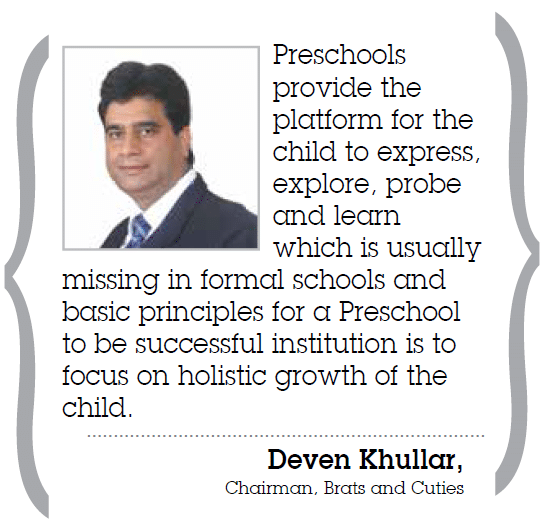 A complete and clear documentation is expected from every preschool. These could be sanction letters from the bank, approvals and licenses from the authorities or curriculum approvals from the education board. Every single paper should be approved and maintained for records.
A complete and clear documentation is expected from every preschool. These could be sanction letters from the bank, approvals and licenses from the authorities or curriculum approvals from the education board. Every single paper should be approved and maintained for records.
The staff whether teaching or non-teaching, needs to be experienced, trained and genuinely interested in spending time with the kids.
Excellent content, curriculum and programme design After school activities.
Customised learning methodologies to various acts of life. The framework of fees versus the facilities must be transparent. A schedule for interaction with parents from time to time regarding academics and administration is important.












